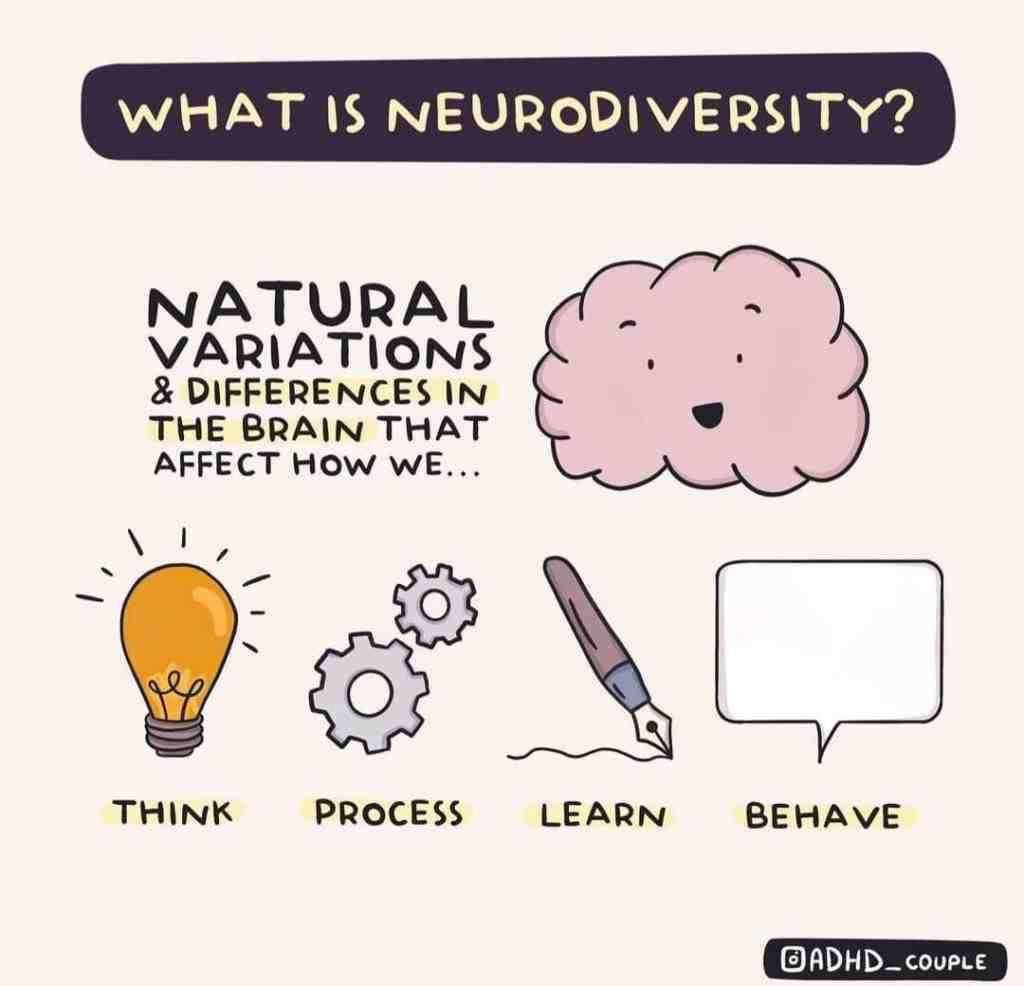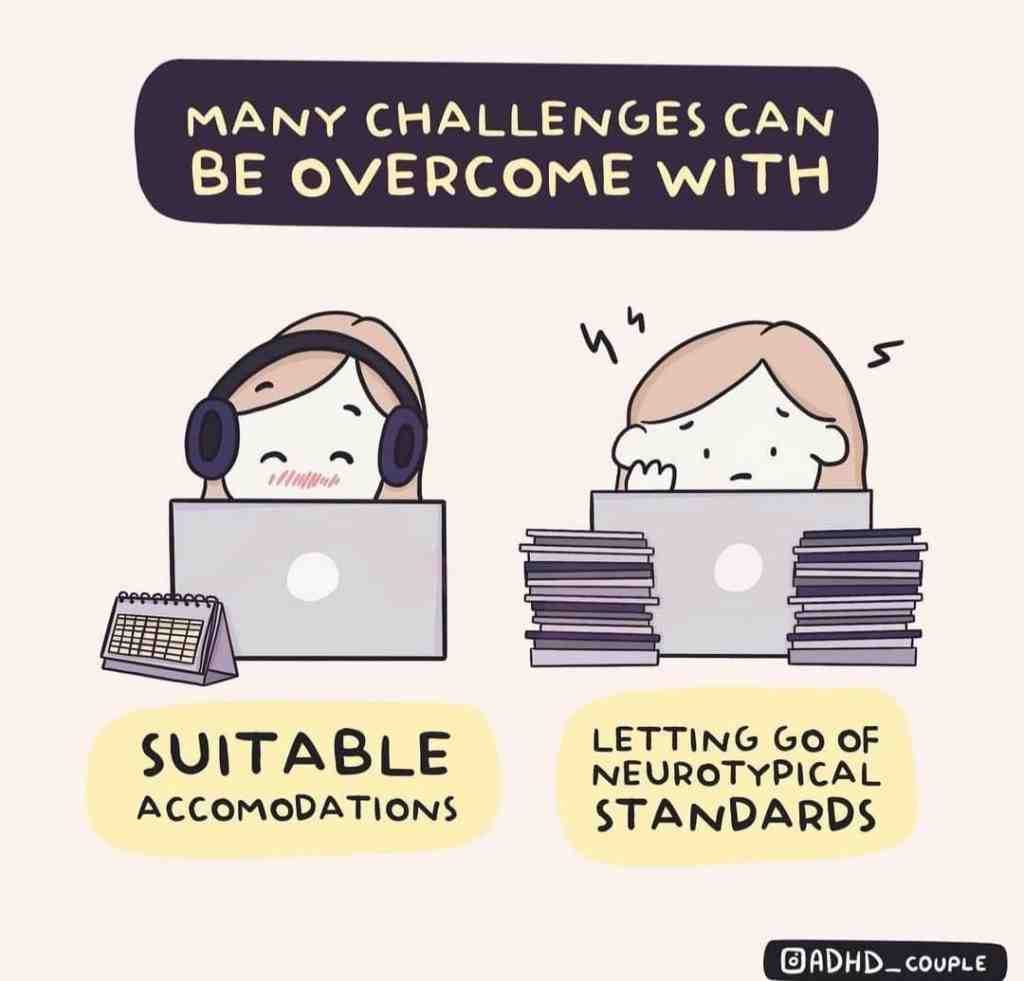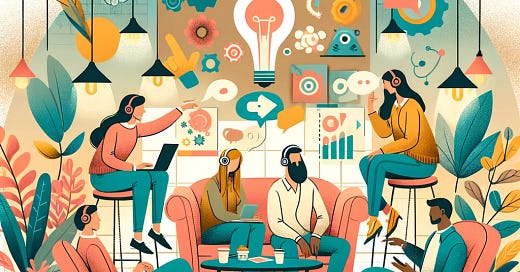From Challenges to Opportunities: Insights into the Neurodiverse Experience in UX
How to Thrive in UX as a Neurodivergent Professional
Neurodiversity refers to a natural variation in how people think, perceive, and learn. It includes conditions like autism, ADHD, dyslexia, and more. Neurodivergent brains are wired differently than neurotypical brains and process information and experiences uniquely. Rather than deficiencies, these represent alternative ways of thinking and perceiving. You may have heard people online refer to themselves as “neuro-spicy”! It is estimated that in the UK around 1 in 7 people are neurodiverse.
Even though being neurodivergent can often be hidden, it can significantly impact employment. Many neurodivergent individuals struggle to find and keep jobs due to issues like sensory sensitivity, social difficulties, emotional regulation challenges, or problems with executive functioning like organisation, time management, and working memory. However, with the right environment and support, neurodivergent individuals can thrive professionally and provide immense value through their unique strengths.
A bit about my experience…
As I shared in a previous article on Neurodiversity, I too have a neuro-spicy brain. Like many others, it took me a long time to realise and accept it but becoming aware of it was eye-opening and helped me be kinder to myself and more patient. Certain aspects of it have been a blessing; being able to focus for prolonged periods of time and have special interests was a huge asset when it came to education and pursuing a career in academia and research. I don’t think this newsletter would have existed without it.
On the other hand, it presented me with a number of additional challenges and it still does… For example, having to work in an office environment is not something I can do on a regular basis. Sensory sensitivities make open offices and commuting intolerable. Social aspects are also more challenging, when you can’t easily read facial expressions or regulate your own tone and expressions. I had to learn to do many things that neurotypical individuals take for granted.
As my role changed from individual contributor to leader and manager, the challenges changed shape. Contrary to popular belief, autistics don’t lack empathy. Sometimes, we experience the opposite. Feeling more empathy makes aspects of managing, especially during turbulent and uncertain times, particularly challenging. Also, honesty and a tendency to tell the truth, even when it can cause hurt, is not a quality that helps you once you get to a certain level.
The aim of this article is to raise awareness on what it is like to be a neurodiverse UXer and discuss ways you can support your neuro-spicy employees to thrive and be the best version of themselves. It’s based on research as well as personal experiences.
Being a Neurodivergent UX Professional
Doing a quick search will reveal that UX careers appears to attract many neurodivergent individuals. When properly supported, neurodiverse perspectives can bring immense value to UX through diverse skills and innovation.
However, individual assessment and support are crucial for success as no two brains are the same; you might have worked with someone with ADHD but that doesn’t mean that everyone with ADHD you meet will be the same.

Unique Strengths
Each neurotype has associated strengths, though these vary by individual. Some are discussed below1:
Autism: Many autistics exhibit heightened abilities for sustained focus and pattern recognition, which are advantageous in UX work (Müller et al., 2021). For example, autistic children often demonstrate superior visual search skills compared to neurotypical peers and are faster at locating a target object among distractors without loss of accuracy.
Recent research has provided new insights into how individuals with autism react in crisis situations, particularly in relation to the bystander effect. This phenomenon, originally identified in the late 1960s, suggests that people are generally less likely to intervene in emergencies when in the presence of others. The findings of this study indicate that employees with ASD are more likely to report practices they perceive as inefficient or unethical, and are less likely to be influenced by social pressure to remain silent. These results suggest that individuals with ASD might be less susceptible to the social norms that typically prevent others from acting in emergency situations.
ADHD: Individuals with ADHD often display enhanced creativity and outside-the-box thinking useful for UX innovation (Boot et al., 2017). This may stem from increased cognitive flexibility and broader attention. However, difficulty sustaining focus can also hamper convergent problem-solving. ADHD has also been linked with the ability to hyperfocus when interested in a topic or activity. This can be very beneficial for a UX Designer or a UX Researcher.
Dyslexia: Research suggests that many dyslexics possess strong visual-spatial abilities ideal for design work. At the same time, challenges with written language components of UX, like information architecture and copywriting, require support.
However, it is worth noting that claims of universal strengths in autism and other conditions are questionable and study findings aren’t always consistent. In fact, one of the main characteristics of autism and neurodiversity in general is its variability. Assumptions of inherent strengths or weaknesses for individuals should be avoided — focus on the person not their neurodiversity.
Challenges & Difficulties
Neurodivergent professionals might face a number of challenges such as:
Sensory Differences: Sensory sensitivities to noises, lighting, and other stimuli are common in autism (Smith & Sharp, 2013). Open offices can be extremely overwhelming. Allowing flexible remote work, noise-cancelling headphones, and private workspaces helps manage sensitivity.
Social Communication: Autistic individuals often struggle with social communication, collaboration, and emotional regulation (Crompton et al., 2020).
Executive Functioning: Many neurodivergent people deal with issues related to executive functioning like organisation, time management, and working memory (Hurlbutt & Chalmers, 2004).
No one-size-fits-all approach works given neurodiversity. Customised support maximises strengths while mitigating challenges.
Accommodations & Strategies
If you are or suspect you are neurodivergent there are several strategies that can help you thrive:
Leverage your strengths - An autistic UXer can be assigned more analytical tasks, while a dyslexic designer might focus on visual designs. Knowing your strengths in the first place can help you focus on tasks you’re more likely to excel at or enjoy.
Consider remote work - Working remotely eliminates difficult office environments and allows control over stimuli, which can be crucial for some neurodivergent individuals. If you can, look for
Minimise distractions - Investing in noise-cancelling headphones, privacy partitions, or working from home can help eliminate disruptions.
Use tools like calendars and timers - Productivity apps provide structure and keep neurodivergent designers on track.
Leverage AI - Use AI tools like ChatGPT to practice certain skills or to check your work. For example, if you tend to make mistakes in presentations, check your text in advance.
Find engaging work - Passion projects in areas of interest allow hyperfocus for big productivity wins.
Request clear specifications - Concrete project guidelines are essential for neurodivergent individuals. This is also something that benefits everyone as it reduces delays and misunderstandings.
Check the company culture - Ensure the company you’re applying to offers flexibility and accommodations for employees. Traditional 9 to 5 roles might not be suitable for you.

Managing Neurodiverse Teams
Supervising neurodiverse teams presents unique challenges. Social-communication issues may require accommodations like written instructions over verbal. Sensory sensitivities might mean allowing noise-cancelling headphones during meetings. Emotional regulation struggles may necessitate additional check-ins and reassurance.
However, the benefits of hiring neurodiverse team members make proper support essential.
Neurodiversity brings diversity of thought, novel perspectives, out-of-the-box thinking, and intense focus on special interests that can lead to creative solutions.
Here are some tips for effectively managing and supporting neurodivergent employees:
Provide structured communication - Supplement verbal instructions with clear written specs, charts, and visual aids. Use briefs before meetings.
Offer flexibility - Don’t require neurodivergent team members to engage in activities that may cause sensory overload or social stress if avoidable.
Check in regularly - Have brief, casual 1-on-1's to provide emotional support and guidance.
Educate yourself - Learn about conditions like autism and ADHD so accommodations make sense.
Focus on strengths - Harness gifts like intense focus and creativity instead of focusing on weaknesses.
Make accommodations - Provide flexibility and tools to help neurodivergent employees excel.
Encourage openness - Foster diversity and inclusion so neurodivergent employees feel comfortable disclosing their needs.
Work on company culture - Negative attitudes and lack of support are barriers to nurturing neurodiverse talent. Strategies like formal neurodiversity training, first-hand accounts from neurodivergent professionals, and committed leadership are needed to replace limiting assumptions with inclusive mindsets and policies.
Ensure hiring and onboarding are inclusive - Inclusive hiring via detailed job descriptions, skills-based assessments, and transitional mentoring enables neurodivergent candidates to showcase abilities (Austin & Pisano, 2017). Structured onboarding and training attuned to diverse needs is key for productivity and retention.
Conclusion
Neurodiversity is a natural form of human diversity that brings immense value to the UX field. With proper workplace support, education, and utilisation of their unique strengths, neurodiverse professionals can thrive and revolutionise user experience design.
there are many more conditions not discussed in this article. If you want to find out more, check out this article.





Question (not a challenge, or any of those unfortunately common potential misinterpretations): I note you used "Neurodiversity" rather than "Neurodivergent" when discussing people with different than the most common brain configuration ("Neurotypical"). Was there a specific reason for that choice?
I've only recently accepted I'm Autistic, and am trying to learn the terminology. I've been following this article: https://neuroqueer.com/neurodiversity-terms-and-definitions/